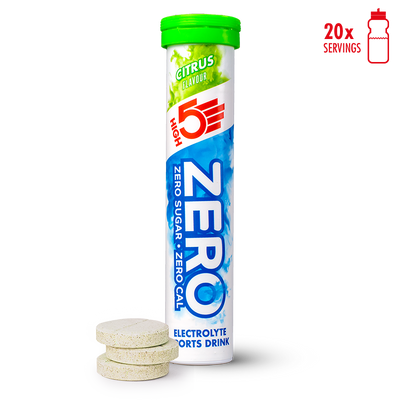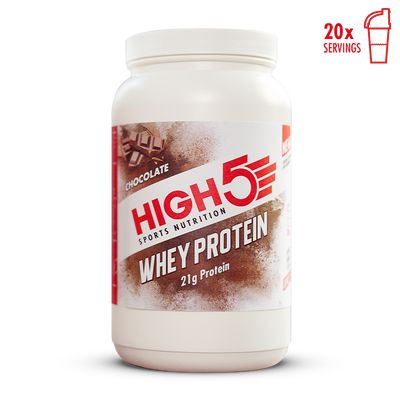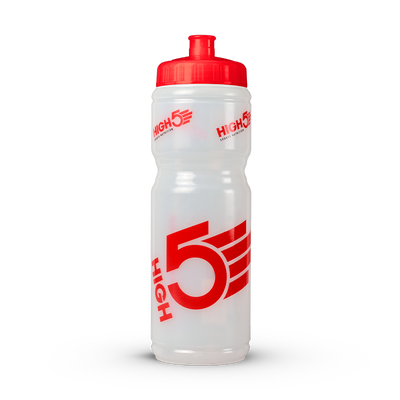For most athletes, the swim can often be the least trained and most disliked discipline of a triathlon. With this in mind we recently spoke to #HIGH5fuelled Matt Trautman to get his advice on how to improve the swim section of your next triathlon.
As a triathlete, squeezing in three different disciplines whilst juggling work and family commitments means you have to be very smart in how you allocate your training time. While the swim may be the shortest discipline and most people’s least enjoyable part of a triathlon, it is critical that you have enough swim fitness so that the rest of your race isn’t ruined before it really begins.

Ensuring you aren’t overly fatigued when you leave the water will make a massive difference in being able to ride and run to your full potential. For age group triathletes, the water temperature needs to be above 24°C before it becomes a wetsuit illegal swim. It means there is a pretty high chance you are going to be donning your neoprene come race day, and in the tropical climates with warm water temperatures the swim is more often than in the sea.
The wonderful thing about a wetsuit or swimming in salt water is that you are more buoyant, meaning you don't have to kick as much so you can preserve your legs for the all important bike and run sections. So how do we enhance our swimming? Quite simply you need to spend as much time as possible practicing and swimming your race stroke. This may seem obvious, but you still see numerous age group triathletes who are only able to swim 2-3 times a week spending half of their session doing kick sets or working on drills trying to get a ‘feel’ for the water. A strong leg kick is not a top priority in a wetsuit legal swim. It gives you minimal propulsion and also fatigues those valuable leg muscles before the bike/run has started.
Swimming as fast as possible with as little use of the legs should be a priority as a triathlete, especially over the longer distances. Besides there being a very small chance of getting a good ‘feel’ for water, triathlons are not raced in a pool. Open water swims will be choppy if not from wind and waves then definitely from the hundreds of other competitors around you. Any chance of feeling the water and swimming smooth goes straight out the window.

Building upper body strength and resilience to complete a long distance swim comfortably, takes time and consistency in the pool. In order to put in the necessary mileage in the pool without getting overly fatigued, there are numerous swim aids you can use. The most important for a triathlete being the pull buoy followed by hand paddles. A pull buoy helps you focus on your stoke without the added stress of trying to stay afloat. It also mimics the body position you’ll have when wearing a wetsuit or even in a salt water swim and minimizes the propulsion you get from your leg kick.
Warm up:
If you are new to swimming or even if you are a very experienced triathlete, doing the majority of your swim workouts with a pull buoy in place is not a problem. If it makes your swimming more enjoyable and means you’re spending more time in the pool, then even better! There are numerous beneficial swim workouts you can do. If you don’t have a coach, then check out some of the hundreds of sessions that can be found online. The main thing is finding consistency and a swim rhythm that is going to propel you to a comfortable and hopefully fast swim time. Mixing up aerobic swim sets with anaerobic (sprints) and strength (paddles) work during the week, or even within a session, will be beneficial and stop you from plateauing. Here is a simple aerobic swim set that will help develop your pace awareness.
8 x 25m (3 easy / 1 fast, 3 easy / 1 fast)
6 x 25m (2 easy / 1 fast, 2 easy / 1 fast)
4 x 25m (1 easy / 1 fast)
2 x 25m (both fast)
10 second rest between each 25m, Pull Buoy optional

Main Set:
2 x 400m paddles/pullbuoy. 70% effort
4 x 200m pullbuoy only. 80% effort
8 x 100 pullbuoy or swim only. All out effort but maintainable for all 8 reps
20 seconds rest for each set
Cool Down:
1 x 200m easy







